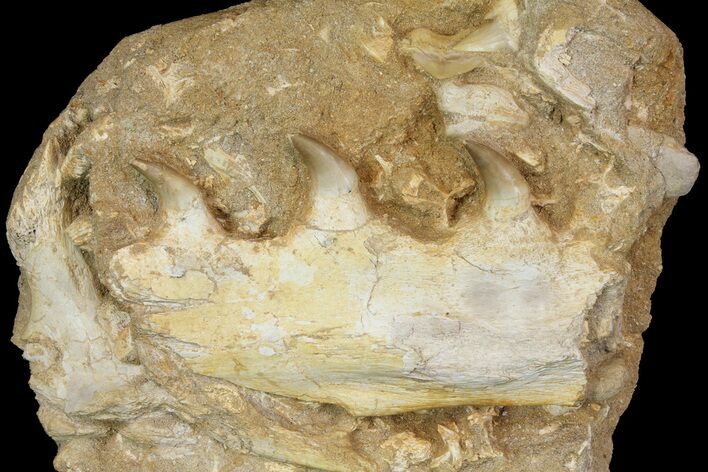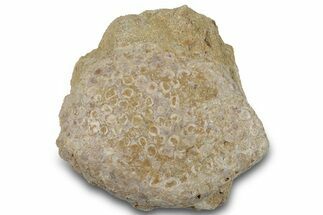This Specimen has been sold.
5.9" Fossil Mosasaur Jaw Section And Shark Teeth - Morocco
This is an excellent, 5.9" fossil jaw section of a Mosasaur (Halisaurus) from the Phosphate Deposits near, Khouribga, Morocco. It is a portion of the mandible (lower jaw) from the left side of the skull and contains three teeth. In addition to the jaw section this specimen contains bone fragments likely from Halisaurus, a tooth from a crow shark (Squalicorax) and a tooth from Otodus.
Halisaurus is a comparatively small Mosasaur, maxing out at around 10 feet in length. It was a sleek and likely quick member of the family. Besides its small size, it had distinctive backward-curving teeth likely used for grasping slippery prey like fish. A paper describing this species can be found below.
Description of new specimens of Halisaurus arambourgi BARDET & PEREDA SOBERBIOLA, 2005 and the relationships of halisaurinae
Halisaurus is a comparatively small Mosasaur, maxing out at around 10 feet in length. It was a sleek and likely quick member of the family. Besides its small size, it had distinctive backward-curving teeth likely used for grasping slippery prey like fish. A paper describing this species can be found below.
Description of new specimens of Halisaurus arambourgi BARDET & PEREDA SOBERBIOLA, 2005 and the relationships of halisaurinae
Otodus is an extinct mackerel (Lamniformes) shark that lived during the Eocene, approximately 54 million years ago. This is the same family of sharks that includes the Great White and the largest shark ever known, the Megalodon. These teeth are collected during phosphate mining operations near Khouribga, Morocco. While Otodus teeth are common fossils at these mines, large, good quality specimens are hard to find since they are often destroyed by the mining equipment.
SPECIES
Halisaurus arambourgi, Squalicorax sp., Otodus sp.
LOCATION
Oulad Abdoun Basin, Morocco
FORMATION
Phosphate Deposits
SIZE
5.9" jaw, 7.5 x 6.8" rock
CATEGORY
SUB CATEGORY
ITEM
#113136
We guarantee the authenticity of all of our specimens.
 Reviews
Reviews
















